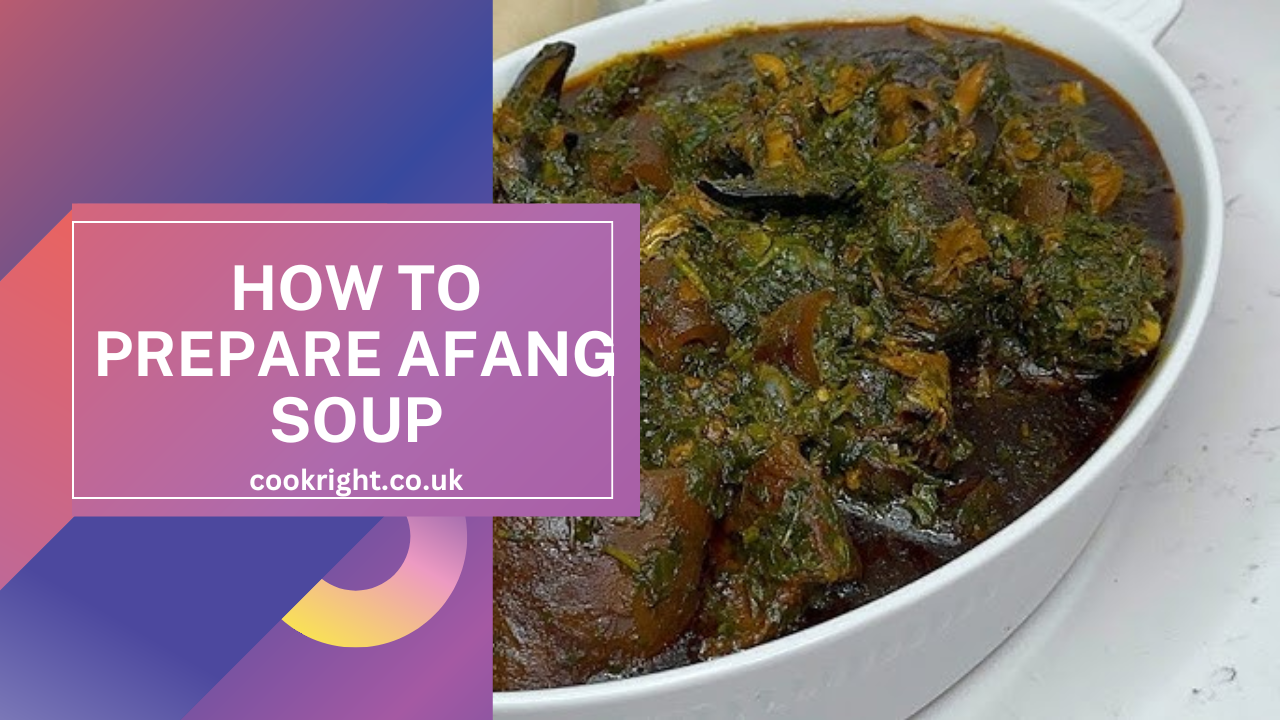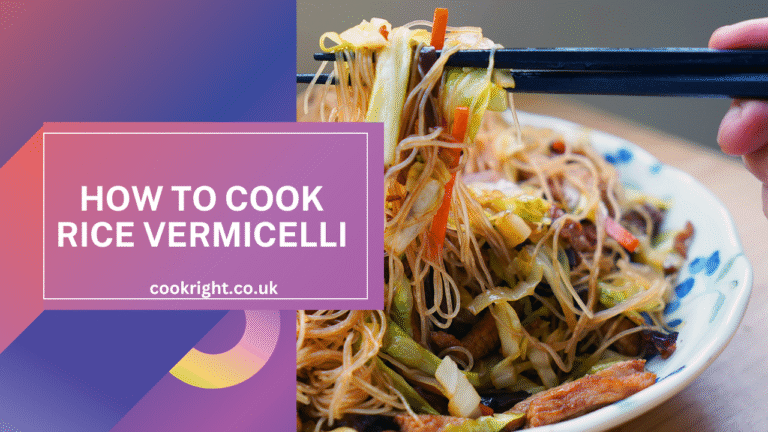Afang Soup is a traditional Nigerian dish that hails from the Efik and Ibibio people of Southern Nigeria, particularly from the Cross River and Akwa Ibom states. This soup is renowned for its rich, leafy goodness, thick consistency, and robust flavors that leave a lasting impression on anyone who tries it. It’s a favorite at many Nigerian occasions, including weddings, family gatherings, and festive celebrations. In this post, we’ll dive deep into the ingredients, preparation, and cooking process for making a perfect pot of Afang Soup.
Ingredients
To make a flavorful pot of Afang Soup, you’ll need the following ingredients:
- Afang Leaves (Wild Spinach or Okazi Leaves): 1 cup, finely chopped or ground
- Waterleaf (or Spinach/Swiss Chard as a substitute): 3 cups, chopped
- Beef: 500 grams, cut into bite-sized pieces
- Kanda (Cow Skin): 200 grams, cut into small pieces
- Stockfish: 1 medium-sized piece, cleaned and cut
- Dry Fish: 2 medium-sized pieces, cleaned and shredded
- Periwinkle (optional): 1 cup, cleaned
- Palm Oil: 1 cup
- Crayfish: 3 tablespoons, ground
- Onions: 1 medium bulb, chopped (optional)
- Pepper (Scotch Bonnet or Ata Rodo): 2-3, to taste, ground
- Seasoning Cubes: 2-3 cubes (Maggi or Knorr)
- Salt: to taste
- Water: as needed
Step-by-Step Preparation
Afang Soup requires some effort, especially in the preparation of the leaves and the meats. However, the result is always worth it. Let’s break down the steps:
1. Prepare the Leaves
- Afang Leaves: Traditionally, Afang leaves are quite tough, so they need to be finely chopped or ground. You can use a food processor or a traditional grinding stone (blender works too, but pulse to avoid a paste).
- Waterleaf: Waterleaf is softer and requires only chopping. If you’re using substitutes like spinach or Swiss chard, chop them finely as well.
2. Prepare the Meats
- Beef, Kanda, and Stockfish: Wash thoroughly and place them in a large pot. Add chopped onions (if using), seasoning cubes, and a little water. Cook until tender. Remember, Kanda and Stockfish take longer to cook, so they should be added earlier.
- Dry Fish and Periwinkle: Rinse the dry fish in hot water to soften and remove any sand or dirt. Periwinkle should be thoroughly washed, with the tips cut off to allow easy sucking of the meat.
3. Start the Cooking Process
- Heat your pot over medium heat and pour in the palm oil. Allow it to heat up slightly but not to smoke.
- Add the ground crayfish and ground pepper. Stir for about a minute to release the flavors. This step infuses the oil with the crayfish’s savory taste and the pepper’s heat.
- Add the boiled meats (beef, Kanda, Stockfish) and dry fish to the pot. Stir well to combine everything, ensuring that the meats absorb the flavors from the crayfish and pepper mixture.
- Pour in about 2 cups of water (adjust depending on how thick or watery you want your soup) and bring to a gentle boil. Let the flavors meld together for about 5 minutes.
4. Add the Waterleaf
- Add the chopped waterleaf to the pot. Waterleaf is a significant component of Afang Soup as it helps to thicken the soup and adds a refreshing taste.
- Stir thoroughly, ensuring that the waterleaf mixes well with the other ingredients. Allow it to cook for about 5 minutes. The waterleaf will release its moisture, contributing to the soup’s consistency.
5. Introduce the Afang Leaves
- Add the finely chopped or ground Afang leaves. These leaves are the star of the dish, giving Afang Soup its distinctive flavor and slightly chewy texture.
- Stir the leaves thoroughly into the soup. Afang leaves are tougher than waterleaf, so they need a little more cooking time, but not too long to preserve their unique flavor.
6. Final Seasoning and Adjustments
- Add the periwinkle if using, and adjust the seasoning by adding salt or more seasoning cubes if needed.
- Allow the soup to simmer for another 5-7 minutes, stirring occasionally to prevent sticking. Afang Soup should be thick, so be cautious with adding too much water at this stage.
7. Serve and Enjoy
- Once everything is well combined and cooked to your desired taste, remove the pot from the heat.
- Afang Soup is best enjoyed hot, served with a side of pounded yam, fufu, garri (Eba), or semovita.
Tips for the Perfect Afang Soup
- Leaf Ratio: The balance between Afang and Waterleaf is crucial. Afang is stronger in flavor, so Waterleaf helps to mellow it out. A common ratio is 1 part Afang to 3 parts Waterleaf.
- Grinding Afang Leaves: If grinding by hand or using a local mill, try to grind the Afang leaves with a little water or crayfish to aid the process.
- Meat Choices: Feel free to add other meats like goat meat, snails, or even chicken, depending on your preference. Variety in meats adds depth to the soup’s flavor.
- Handling Periwinkle: If you’re unfamiliar with periwinkle, ask your local African food store to prep it for you. They can be sold already cleaned and cut, making your cooking process much easier.
Conclusion
Afang Soup is more than just a meal; it’s a rich, cultural experience that embodies the essence of Southern Nigerian cuisine. The combination of fresh, local ingredients, tender meats, and the distinct taste of Afang leaves creates a dish that’s both nourishing and deeply satisfying. Whether you’re cooking for family, friends, or a special occasion, Afang Soup is sure to impress with its hearty flavors and inviting aroma.
Grab your ingredients and start cooking up a storm with this detailed guide. Enjoy the vibrant taste of Nigeria with every spoonful of Afang Soup!




